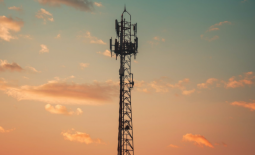When a Landing Page is Better Than a Website
Although I continually stress the importance of having a website (especially one with a blog), there are times when launching a simple Landing Page is better for achieving your project goals because a full-blown website might actually work against you!
Chris Brogan calls a website your home base.
It is the headquarters of your personal or company brand — the tree trunk from which all of your other projects branch out. It’s a great place for your blog and ongoing editorial content. It’s the best place for an “About Us” page where people can learn about your business philosophy and work history. It’s a virtual brochure for your service and product offerings and a showcase for your client portfolio. The longer your site is up and the longer your articles and pages are live, the more credibility and authority you can build with the search engines — making it easier for prospects and business opportunities to find you online.
On the other hand, nothing cuts to the chase and gets to the point more quickly than a well-designed promotional Landing Page
Landing Pages (also called Micro-Sites) are usually a single page (sometimes 2 or 3 short pages) that are short on content but long on Call-To-Action.
If a website is a book, a landing page is the back cover — using a short summary, testimonials, and marketing language to turn browsers into buyers.
Your landing page should feature a single CTA (Call-To-Action) encouraging them to sign-up for more information or make a purchase or share with a friend.
Putting more than one CTA on a page will actually reduce the percentage of people who choose to take action because you gave them too many choices. Instead of being an option of signing-up for your email list and not signing up for your list, each additional CTA is yet another decision and choice they have to make multiplying number of times they might choose “nope” as their decision.
Your landing page should offer your CTA right at the top of your page for people who make quick decisions and want to commit to their choice and move on — but you should also display the Buy button or sign-up box in the middle of your marketing copy for the people who were convinced after your first paragraph or two. And you should have your button or box at the very bottom of the page for those individuals who love to read all the nitty gritty details and comb through the fine print.
If you make your landing page visitors scroll up and down your page looking for the CTA mechanism it is yet another opportunity for them to choose to leave the page and move on without taking action.
Don’t overlook your confirmation message
When a visitors does take action, make certain you’ve built in a confirmation message so they know that their request to join your list or receive more information or buy your product was successfully executed.
Every payment checkout system and email service I’ve ever seen always offers a confirmation message you can display to your users, when an action is completed. Take advantage of a simply “confirmed” pop-up message or redirect to a full page on your primary website where you layout the next steps of being a member and what your new customer can expect in the days to come.
A couple of my favorite landing page utilities are Carrd.co and MailerLite
Carrd.co is a super-simple and reliable tool that has a free version, but the annual fee for their premium level is only $19.00. For all the extra features it nets you, just go ahead and upgrade to get the full benefit of this easy-to-use landing page builder with free hosting.
MailerLite came on the scene as a email list competitor to MailChimp, but in my opinion surpassed MailChimp by offering a free landing page builder, free automated marketing campaigns, and more. MailerLite did such a good job of pushing the envelope, that MailChimp eventually rolled out the same free features in an effort to keep up (monkey see, monkey do), but I think the damage was done and it cost them some customers. I know I switched and have been very happy with MailerLite.
If you need more features (or more help)…
HubSpot is another trusted resource that not only has landing page tools, but also a dozen other tools for blogging, email, analytics, CRM, and marketing automation that are all designed to work together in order to manage your sales and marketing efforts.
If you decide to go with a full suite of features like HubSpot, you may find value in working with a company like LeadG2 — a Certified HubSpot Partner that can help you conceive and execute campaigns using the HubSpot tools more effectively and efficiently than you may be able to do as a new user. LeadG2 can train you and your team on using HubSpot while simultaneously helping you to create and manage your inbound marketing and sales efforts so you get more value more quickly from your investment in HubSpot.
No matter which tools you decide to use, Landing Pages are incredibly powerful and effective marketing tools when used to achieve a specific and strategic business goal. Add this weapon to your marketing arsenal and watch your results begin to rise.



